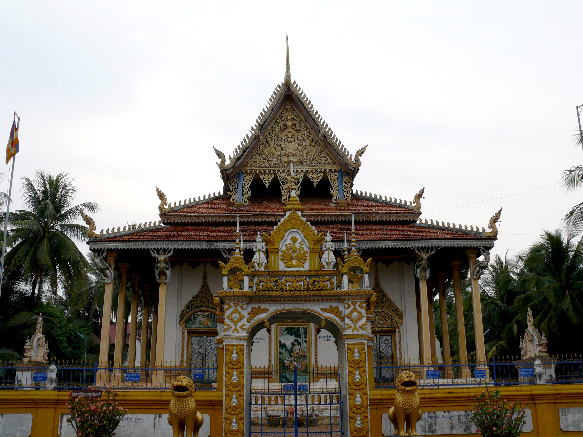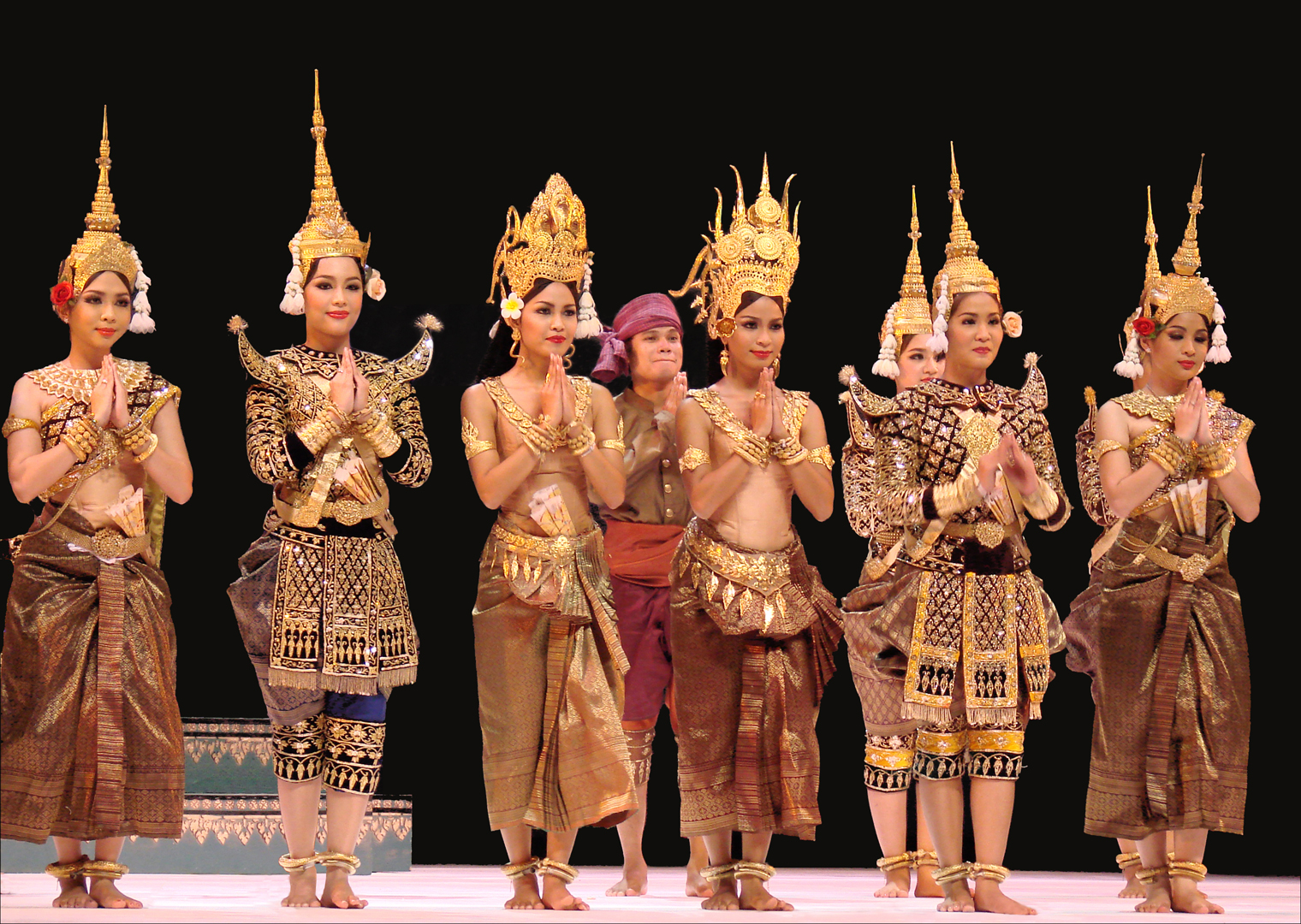|
Ang Mey
Ang Mey ( km, អង្គម៉ី ; 1815 – December 1874) was a Monarchy of Cambodia, monarch of Cambodia. Her official title was Samdech Preah Mahā Rājinī Ang Mey. She was one of few female rulers in History of Cambodia, Cambodia's history, and the first one since Queen Tey. Installed on the Cambodian throne by the Vietnamese, her reign was dominated by the Siamese-Vietnamese War (1841–1845). Queen Ang Mey, also known by her Vietnamese title ''Ngọc-Vân-công-chúa'' (Princess Ngọc Vân), was proclaimed monarch on the death of her father by the Vietnamese faction at court with the title of "Chân Lạp quận chúa" (Duchess of Cambodia) in January 1835, then deposed in August 1840 with the demoted title of "Mỹ-Lâm-quận-chúa" (Duchess of Mỹ Lâm). She was reinstated in 1844, and again removed from the throne by the Vietnamese and taken to Huế with her sisters in 1845. Biography Early life Ang Mey was born in 1815 as the second daughter of Ang Chan I ... [...More Info...] [...Related Items...] OR: [Wikipedia] [Google] [Baidu] |
Monarchy Of Cambodia
The monarchy of Cambodia is the head of state of the Cambodia, Kingdom of Cambodia. In the contemporary period, the King's power has been limited to that of a symbolic figurehead. The monarchy had been in existence since at least 68 AD except during its abolition from 1970 to 1993. Since 1993, the King of Cambodia has been an elected monarch, making Cambodia one of the few elective monarchy, elective monarchies of the world. The king is elected for life by the Royal Council of the Throne, which consists of several senior political and religious figures. Candidates are chosen from among male descendants of King Ang Duong who are at least 30 years old, from the two royal houses of Cambodia (the House of Norodom and the House of Sisowath). Role Cambodia's constitution, promulgated in 1993 stipulated the king's role as a mainly ceremonial one. It declared that the king "shall reign, but not govern" as well as being the "symbol of national unity and continuity". The king perfo ... [...More Info...] [...Related Items...] OR: [Wikipedia] [Google] [Baidu] |
Nguyen Dynasty
Nguyễn () is the most common Vietnamese surname. Outside of Vietnam, the surname is commonly rendered without diacritics as Nguyen. Nguyên (元)is a different word and surname. By some estimates 39 percent of Vietnamese people bear this surname.Lê Trung Hoa, ''Họ và tên người Việt Nam'', NXB Khoa học - Xã hội, 2005 Origin and usage "Nguyễn" is the spelling of the Sino-Vietnamese pronunciation of the Han character 阮 (, ). The same Han character is often romanized as ''Ruǎn'' in Mandarin, ''Yuen'' in Cantonese, ''Gnieuh'' or ''Nyoe¹'' in Wu Chinese, or ''Nguang'' in Fuzhou dialect, Hokchew. . Hanja reading ( Korean language, Korean) is 완 (''Wan'') or 원 (''Won'') and in Hiragana, it is げん (''Gen''), old reading as け゚ん (Ngen). The first recorded mention of a person surnamed Nguyen is a 317 CE description of a journey to Giao Châu undertaken by Eastern Jin dynasty (, ) officer and his family. Many events in Vietnamese history have contribu ... [...More Info...] [...Related Items...] OR: [Wikipedia] [Google] [Baidu] |
Bangkok
Bangkok, officially known in Thai language, Thai as Krung Thep Maha Nakhon and colloquially as Krung Thep, is the capital and most populous city of Thailand. The city occupies in the Chao Phraya River delta in central Thailand and has an estimated population of 10.539 million as of 2020, 15.3 percent of the country's population. Over 14 million people (22.2 percent) lived within the surrounding Bangkok Metropolitan Region at the 2010 census, making Bangkok an extreme primate city, dwarfing Thailand's other urban centres in both size and importance to the national economy. Bangkok traces its roots to a small trading post during the Ayutthaya Kingdom in the 15th century, which eventually grew and became the site of two capital cities, Thonburi Kingdom, Thonburi in 1768 and Rattanakosin Kingdom (1782–1932), Rattanakosin in 1782. Bangkok was at the heart of the modernization of Siam, later renamed Thailand, during the late-19th century, as the country faced pressures from the ... [...More Info...] [...Related Items...] OR: [Wikipedia] [Google] [Baidu] |
Cambodian Rebellion (1840)
The Cambodian rebellion of 1840 was a Cambodian short-lived anti-Vietnamese insurrection fought particularly heavily around Prey Veng and Ba Phnom. In 1840, the Cambodian queen Ang Mey was deposed by Vietnamese; she was arrested and deported to Vietnam along with her relatives and the royal regalia. Spurred by the incident, many Cambodian courtiers and their followers revolted against the Vietnamese rule. The rebels appealed to Siam who supported another claimant to the Cambodian throne, Prince Ang Duong. Rama III responded and sent Ang Duong back from exile in Bangkok with Siamese troops to install him on the throne. The Vietnamese suffered attack from both Siamese troops and Cambodian rebels. What was worse, in Cochinchina, there were several rebellion broke out. The main strength of Vietnamese marched to Cochinchina to put down those rebellions. Thiệu Trị, the new crowned Vietnamese emperor, decided to seek a peaceful resolution. Trương Minh Giảng, the Governor- ... [...More Info...] [...Related Items...] OR: [Wikipedia] [Google] [Baidu] |
Mekong
The Mekong or Mekong River is a trans-boundary river in East Asia and Southeast Asia. It is the world's List of rivers by length, twelfth longest river and List of longest rivers of Asia, the third longest in Asia. Its estimated length is , and it drains an area of , discharging of water annually. From the Tibetan Plateau the river runs through China, Myanmar, Laos, Thailand, Cambodia, and Vietnam. The extreme seasonal variations in flow and the presence of rapids and waterfalls in the Mekong make navigation difficult. Even so, the river is a major trade route between western China and Southeast Asia. Names The Mekong was originally called ''Mae Nam Khong'' from a contracted form of Tai language, Tai shortened to ''Mae Khong''. In Thai and Lao, ''Mae Nam'' ("Mother of Water[s]") is used for large rivers and ''Khong'' is the proper name referred to as "River Khong". However, ''Khong'' is an archaic word meaning "river", loaned from Austroasiatic languages, such as Vietnamese ... [...More Info...] [...Related Items...] OR: [Wikipedia] [Google] [Baidu] |
Minh Mạng
Minh Mạng () or Minh Mệnh (, vi-hantu, 明 命, lit. "the bright favour of Heaven"; 25 May 1791 – 20 January 1841; born Nguyễn Phúc Đảm, also known as Nguyễn Phúc Kiểu) was the second emperor of the Nguyễn dynasty of Vietnam, reigning from 14 February 1820 until his death, on 20 January 1841. He was the fourth son of Emperor Gia Long, whose eldest son, Nguyễn Phúc Cảnh, had died in 1801. He was well known for his opposition to French involvement in Vietnam and his rigid Confucian orthodoxy. Early years Born Nguyễn Phúc Đảm at Gia Định in the middle of the Second Tây Sơn – Nguyễn War, Minh Mạng was the fourth son of lord Nguyễn Phúc Ánh – future Emperor Gia Long. His mother was Gia Long's second wife Trần Thị Đang (historically known as Empress Thuận Thiên). At the age of three, under the effect of a written agreement made by Gia Long with his first wife Tống Thị Lan (Empress Thừa Thiên), he was taken in an ... [...More Info...] [...Related Items...] OR: [Wikipedia] [Google] [Baidu] |
Battambang
Battambang ( km, បាត់ដំបង, UNGEGN: ) is the capital of Battambang Province and the third largest city in Cambodia. Founded in the 11th century by the Khmer Empire, Battambang is the leading rice-producing province of the country. For nearly 100 years it was a major commercial hub and provincial capital of Siamese province of Inner Cambodia (1795-1907), though it was always populated by Khmer, with some ethnic Vietnamese, Lao, Thai and Chinese. Battambang remains the hub of Cambodia's northwest, connecting the region with Phnom Penh and Thailand. The city is situated on the Sangkae River, a tranquil, small body of water that winds its way picturesquely through Battambang Province. As with much of Cambodia, French Colonial architecture is a notable aspect of the city, with some of the best-preserved examples in the country. Now the government and Ministry of Culture and Fine Art are preparing documents to nominate The Old Town of Battambang in the list of UNESC ... [...More Info...] [...Related Items...] OR: [Wikipedia] [Google] [Baidu] |
Phnom Penh
Phnom Penh (; km, ភ្នំពេញ, ) is the capital and most populous city of Cambodia. It has been the national capital since the French protectorate of Cambodia and has grown to become the nation's primate city and its economic, industrial, and cultural centre. Phnom Penh succeeded Angkor Thom as the capital of the Khmer nation but was abandoned several times before being reestablished in 1865 by King Norodom. The city formerly functioned as a processing center, with textiles, pharmaceuticals, machine manufacturing, and rice milling. Its chief assets, however, were cultural. Institutions of higher learning included the Royal University of Phnom Penh (established in 1960 as Royal Khmer University), with schools of engineering, fine arts, technology, and agricultural sciences, the latter at Chamkar Daung, a suburb. Also located in Phnom Penh were the Royal University of Agronomic Sciences and the Agricultural School of Prek Leap. The city was nicknamed the "Pearl of As ... [...More Info...] [...Related Items...] OR: [Wikipedia] [Google] [Baidu] |
Khmer Classical Dance
The Royal Ballet of Cambodia ( km, របាំព្រះរាជទ្រព្យ) is a dance company of Cambodia, famous for its luxury of costumes, accessories, gold and silver, accompanied by a beautiful soft dance. It is a dance that the Cambodian royal family created as a special treasure to show the high dignity of Cambodian dancers, the work of Queen Sisowath Kosamak, created from Khmer traditional dance. During the reign of King Norodom Sihanouk, this dance was inscribed on the UNESCO World Heritage List on 7 November 2003. Teacher Salute Ceremony in Royal Ballet The Teacher Salute Ceremony is a tribute to the teachers who trained and is dedicated to the spirit that controls the spirit in each of the characters of the Royal Ballet. Before the dancers go out to before the audience, the ceremony ensures that their performances are smooth, confident and unobstructed. Salute to the teacher has been around since ancient times when the royal dance troupe had to o ... [...More Info...] [...Related Items...] OR: [Wikipedia] [Google] [Baidu] |
.jpg)

.jpg)



